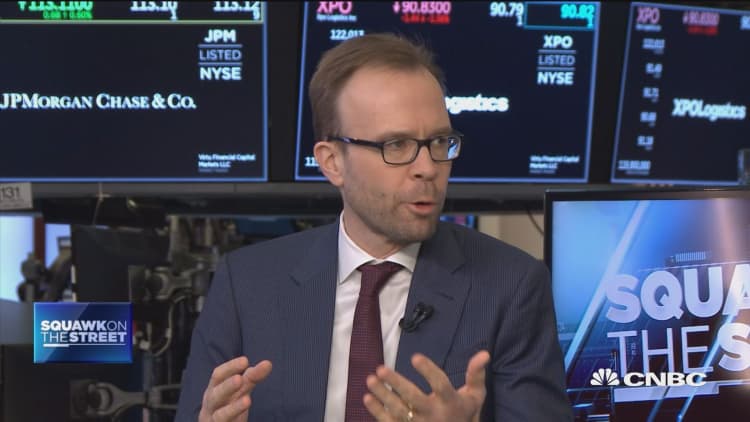
The yield on the 10-year Treasury note jumped to 2.92 percent, its highest level since January 2014, and slightly above the levels that sparked a stock-market sell-off earlier in the month. The move higher came after the government reported inflation in January rose by more than expected.
The yield has clawed its way from a low of 2.65 percent touched last week in the wake of a stock market plunge that sent investors back into Treasurys temporarily. It first hit a four-year high of 2.902 percent on Monday.
The 7-year note yield hit a high of 2.826 percent, its highest level since April 2011, when it yielded as high as 2.830 percent. Meanwhile, the U.S. 5-year yield added about 10 basis points to a high of 2.639 percent, its highest level since April 2010 when it yielded as high as 2.681 percent.
As of the the latest reading, the 10-year yield remained roughly 8 basis points higher at 2.913 percent at 3:49 p.m. ET, while the yield on the 30-year bond rose to 3.174 percent. Bond yields move inversely to their prices.
The new rate highs came after the Labor Department reported U.S. consumer prices climbed much more than expected in January, spurring inflation fears and worries that rates could climb higher.
The consumer price index rose 0.5 percent last month against projections of a 0.3 percent increase. Excluding volatile food and energy prices, the index was up 0.349 percent against estimates of 0.2 percent, the largest gain for the measure since March, 2005.
Schwab's Kathy Jones argued that the latest reading could mean that the yield on the benchmark 10-year note could test 3 percent in the next few months.
"I think inflation's back, at least in a moderate sense," said Jones, who serves as chief fixed income strategist for the Schwab Center for Financial Research. "Over the last 12 months, if you take the core CPI numbers they're up about 2 percent. That's healthy ... Between the economic data, the inflation data and the supply coming to market, we may get through that 3 percent area."
Headline CPI rose 2.1 percent on an annualized basis against expectations of 1.9 percent. Core CPI increased 1.8 percent vs. estimates of 1.7 percent.
The government added that pricing pressures were widespread, citing upticks in gasoline, shelter, apparel, medical care and food.
Treasurys
The CPI data "didn't necessarily disappoint for those believing in a real strong return of inflation story," said Craig Bishop, vice president of U.S. fixed income at RBC Wealth Management. But there wasn't "enough in our mind to signal a more aggressive Fed posture. The thing that the Fed has made clear is that one data point doesn't make or cause any swings in monetary policy. It's a number you need to look out over the next six months."
Volatile trading continued to put investors on edge, after U.S. stocks entered correction territory last week. While markets have been staging a slight recovery in recent days, the prospect of higher U.S. interest rates continues to weigh on sentiment.
Following the CPI data, the Dow Jones industrial average opened more than 100 points lower before recovering.



